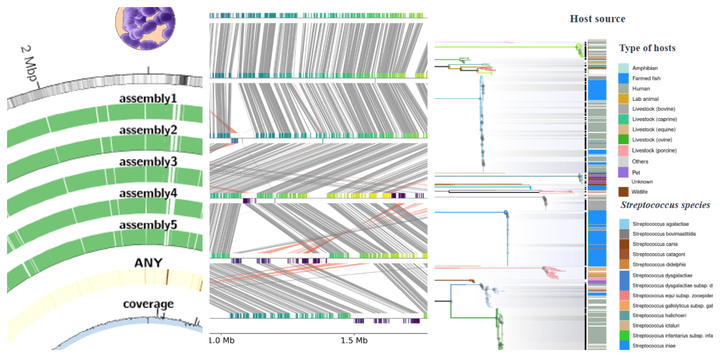Comparative Genomics and Reverse Vaccinology of Streptococcus iniae: Blueprints for Affordable Aquaculture Vaccines
Abstract
The high cost of vaccines relative to antimicrobials in aquaculture limits their adoption, particularly in low-value freshwater fish that nonetheless play a crucial role in global food security. Current vaccines, killed or live attenuated are highly effective but are no longer cost-efficient. Here, we present a new framework that leverages epidemiology, pangenomics, and reverse vaccinology with Quality By Design (QbD) principles to design more affordable vaccines. Targeting a range of aquatic streptococcal species, we emphasize the fish pathogen Streptococcus iniae. We identify a subset of protein antigens from the proteome that are well-adapted for low-cost mass production using QbD manufacturing strategies. This integrated approach is a crucial step towards making vaccines more accessible and cost-effective for global aquaculture, ultimately aiding in combating antimicrobial resistance and ensuring food security and consumer health.
